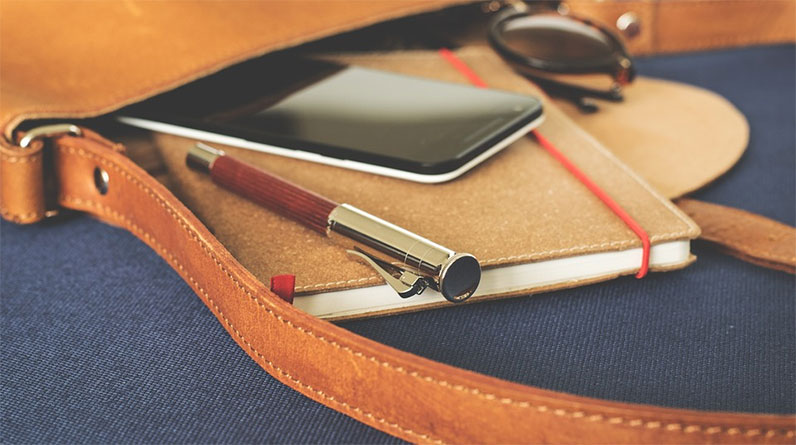
Mindful Journaling
One of the easiest ways to practice mindfulness is through journaling. This practice can help you build a healthy habit that can transform your life.
There are many different types of journals you can keep, such as a daily diary or a travel journal. All of them are effective in boosting gratitude, mitigating stress, and helping you feel more present.
Getting Started
Mindful journaling is a great way to help you feel more present in your life. It can also reduce stress and anxiety, improve your mental health, and boost your immune system. It’s easy to get started, and there are plenty of ways to keep it fun and creative!
First, decide what you want to write about. This can be anything from mental health topics to daily affirmations or just about anything else you like! You can even choose a mindful journal with prompts that inspire you to think creatively about your everyday experiences.
Next, choose a comfortable place to write. You can use a desk, your bed, or the sofa, but it should be a space that is free of distractions and allows you to focus on your writing. Once you’ve chosen a spot, start by taking a few minutes to clear your head and focus on the present.
Finally, be sure to date your journal entries. This will give you a sense of continuity and allow you to see how your mindfulness journaling practice is changing over time.
The most important thing is to make journaling a habit. It’s not something to be rushed, so try to set aside regular times to do it.
Whether it’s morning, evening, or anytime in between, there is no wrong time to write your journal. However, if you do prefer to start the day with meditation, try to incorporate this into your journaling routine every day.
It’s also a good idea to set alarms on your phone so that you won’t forget to journal, and to review your entries regularly to ensure that you are on track with your mindfulness practice.
Once you’ve gotten started, remember to take your time and answer each prompt in the most honest manner possible. This will help you build a consistent journaling habit and increase the benefits of your daily mindfulness practice.
Getting started with journaling for daily mindfulness can be a little daunting, but don’t let that stop you! All you need is a pen, some paper, and a few minutes of quiet time to reflect on the day.
Recording Your Thoughts
When you’re struggling with negative thoughts that are making you feel anxious or depressed, it can be helpful to write them down. This gives you a chance to process them, which can help you see that they’re not entirely true and are just a part of your mind’s normal patterns.
Taking the time to journal daily can help reduce stress, improve emotional balance, and alleviate symptoms of anxiety and depression. It’s also a powerful tool to use when coping with difficult emotions, such as anger and sadness.
Writing about your thoughts is a key aspect of mindfulness-based cognitive therapy (CBT), which is used to treat depression, anxiety, and other mental health issues. CBT involves working through unhelpful thinking styles and identifying their root beliefs, which can be difficult to do without written evidence.
By capturing these thoughts, you can challenge them and replace them with more positive ones that will help you stay in the moment. It’s important to note that it takes time for this to happen and not to expect results instantly.
Another benefit of writing down your thoughts is that it helps you create distance and perspective. In fact, it’s a key feature of acceptance and commitment therapy, which is a type of cognitive therapy that combines mindfulness practices with elements of acceptance and commitment.
The practice of recording your thoughts can be an effective tool for reducing negative feelings, as it helps you see that your emotions aren’t real and that they have no bearing on your day-to-day life. It’s also a great way to practice mindful compassion, as it allows you to observe your thoughts and emotions with an open and nonjudgmental eye.
If you aren’t comfortable expressing your emotions through writing, it can be helpful to share them with a friend or family member for feedback or support. You can also seek the help of a therapist to help you process your thoughts and emotions and resolve any conflicts that arise during your journaling sessions.
The key is to keep the exercise short and simple, avoiding overthinking or overanalyzing. If you have trouble with a lot of racing thoughts, you may need to use a focused journal prompt instead of writing down everything that comes to your mind.
Using Prompts
Journaling for daily mindfulness is a great way to offload stress, relax, and reflect on your day. It also allows you to focus on the positives in your life. It can help you manage anxiety, decrease depression, and enhance your overall well-being.
Using prompts to journal is a great way to make the practice more meaningful and engaging. Many mindfulness journals have prompts for every day of the week, which makes it easier to stay focused on your goals and intentions.
Prompts for mindfulness can be anything from writing down your feelings to making a list of things you are grateful for. You can also use mindfulness journal prompts to explore your thoughts and emotions in a creative way, like writing a poem or song about your experiences.
Another great way to encourage creativity in your journaling is to write about something that you are really interested in. This could be a topic that you are studying in school or something you’ve always wanted to learn more about.
The best way to keep a mindful journal is to choose a journal that allows you to express yourself in an open and creative manner. You can also choose to use a journal with prompts for everyday mindfulness, which is especially helpful if you’re new to the practice.
When you’re starting a mindful journaling practice, it is important to make sure that you are comfortable and relaxed. Whether you are laying in your bed, sitting on the kitchen counter, or standing at your desk, it is important to be in a place where you can think freely and without distractions.
You can find many mindfulness journal prompts online, and you can even create your own to fit your needs. Some prompts are simple, while others are more challenging.
Some of the most popular prompts include writing about your thoughts, feelings, and dreams. You can also try writing a stream-of-consciousness journal entry, where you simply write down everything that comes to mind.
Keeping a journal is a great way to practice mindfulness, and it can be done anywhere, at any time. It is also a fantastic tool for increasing self-awareness, improving memory, and helping you recover from trauma.
Getting Creative
Journaling is often thought of as an antiquated practice, but in today’s world where social media dominates our lives it has become a modern-day self-care tool. It’s a simple, quick, and effective way to tune into your daily thoughts and feelings.
It’s also a good way to de-stress, improve your memory and boost your confidence. Whether you’re writing creatively or in the traditional style, it’s an effective meditative activity that can help you stay calm and focus on what matters most.
For those who like a more structured approach, there are several journals that offer prompts or questions to encourage you to think about what’s happening in your life and what you’re grateful for. These can be a great start to getting into the habit of regular self-reflection, and they’ll give you plenty of ideas for your next journaling session.
If you’re looking for a more creative outlet, there are some mindfulness art journals that are perfect for this type of self-care practice. They use the art of mindfulness to help you connect with your emotions, which can be a valuable self-care technique for many people who have mental health issues.
You can use doodling and mindfulness coloring in your journal, both of which are a wonderful way to channel your inner creativity and release your feelings. You can do this in your journal with no special equipment at all, just a pen or pencil and some paper.
Another way to get creative with your journaling is by experimenting with different techniques and styles of writing. This can include writing poetry, song lyrics, and even music notes. This is a wonderful way to express your emotions, and it’s also a fun hobby that can be enjoyed by people of all ages.
Some people find it easier to write with a pen, while others prefer to write using a keyboard or even a typewriter. Whatever you prefer, just be sure to keep it quiet and avoid distractions such as phone calls or other forms of media so that you can enjoy the best possible experience for your journaling practice.


